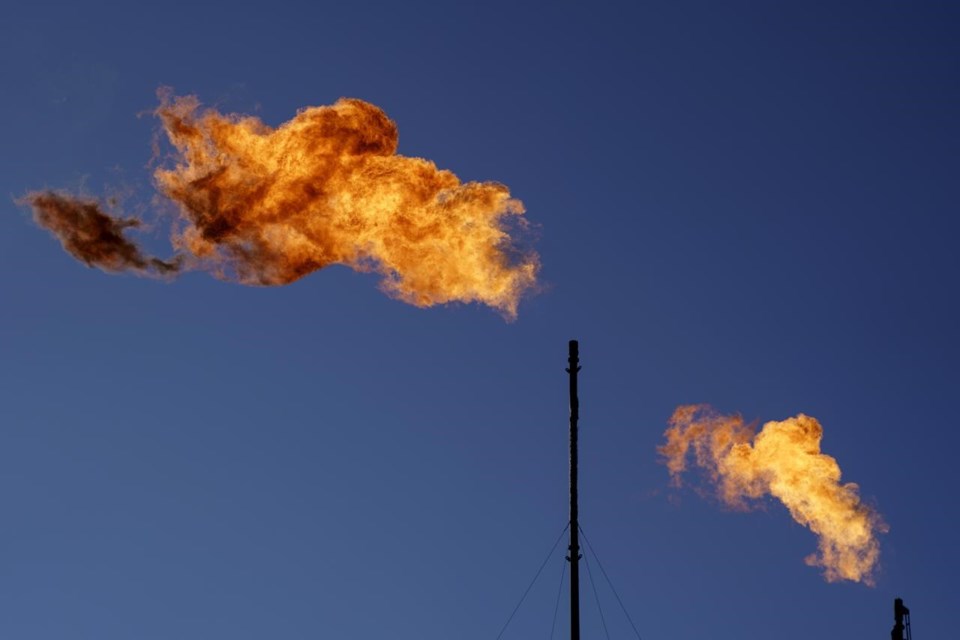Saskatchewan's oilpatch emits a potent greenhouse gas at a higher rate than almost anywhere else in North America, indicates new research from one of Canada's premier climate labs.
A published paper from Carleton University's Energy and Emissions Research Lab concludes that on average, the province leaks about 2.6 per cent of the natural gas it produces into the atmosphere, where it warms the climate about 80 times faster than carbon dioxide.
That's significantly higher than almost any other field in Canada or the U.S., and is well above proposed guidelines in the U.S. and Europe.
"That methane intensity is very high," said Matthew Johnson, who heads the lab and is a co-author of the paper. "Companies that want access to that international market really need to think strategically here."
Alberta's average is about 1.8 per cent, while British Columbia's is 0.4 per cent.
Saskatchewan Premier Scott Moe and his Alberta counterpart Danielle Smith point to figures suggesting industry has reduced methane emissions by 60 and 44 per cent, respectively — well on their way to meeting federal guidelines of 80 per cent.
However, Johnson said that's the wrong measure.
He points to multiple papers that have concluded that official estimates of those releases — including Saskatchewan's — are too low by at least half. That means any baseline figure used to calculate a percentage reduction is likely unreliable.
Still, the Carleton paper attempts to reconstruct historic emissions. It finds the province has reduced emissions by anywhere from 23 to 69 per cent.
"Credit where credit is due," Johnson said. "But that's a huge margin of error."
Worse, the researchers found that almost all the reductions came from production cuts at the leakiest facilities, not industry improvements.
"If that rebounded, there's always a risk those emissions come back," Johnson said.
Saskatchewan government spokesman Sam Sasse said the report acknowledges the province's achievements.
"Industry is making substantial investments," he said in an email. "Work is already translating into real world reductions."
"Technology for emissions monitoring is evolving and Saskatchewan will consider practical ways to increase our understanding of our emission profile. This report, and technology used by its authors, provides useful details on both emission sources and emission screening for Saskatchewan."
Johnson said Canada needs to start measuring what he calls "methane intensity" instead of relying on dubious figures for percentage declines. That would be consistent with its measures of how much carbon is released per barrel of oil, referred to as carbon intensity.
"The world is clearly aligning along methane intensity," he said. "Methane intensity is what matters."
He points to coming regulations in the U.S. and Europe that stipulate natural gas producers with a methane intensity higher that two per cent will face financial penalties. Canadian producers need to take note, said Johnson.
"We've got a long way to go before we're at the standard of the U.S. and Europe," he said. "That's the future of the sector."
The paper also finds methane isn't coming from where industry and government think it is. For example, it concludes almost 10 times as much methane is venting from tanks associated with a specific type of heavy oil production as official estimates say.
If the problem is to be fixed, it helps to know where it's coming from, said Johnson.
"It changes how you're going to plan your mitigation."
Johnson said Canadian producers have improved how they keep methane in the pipe instead of in the air. But he said there's much more work to be done.
"At the end of the day, what we do know definitively is emissions in 2020 and 2021 are still quite high.
This report by The Canadian Press was first published Dec. 8, 2023.
Bob Weber, The Canadian Press




